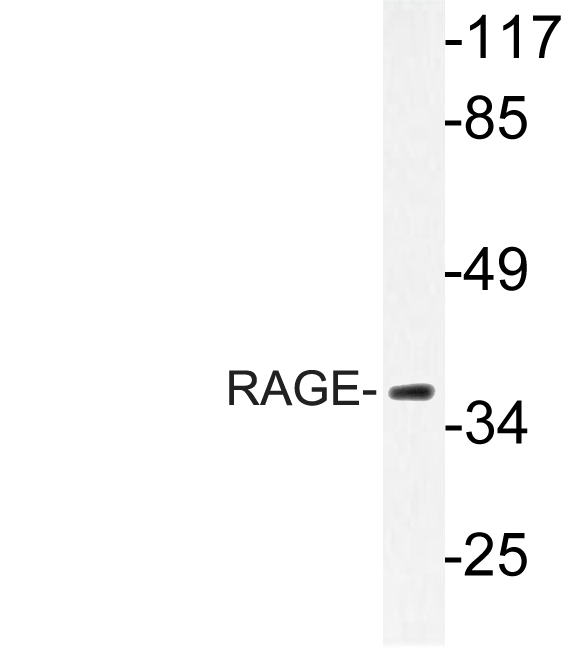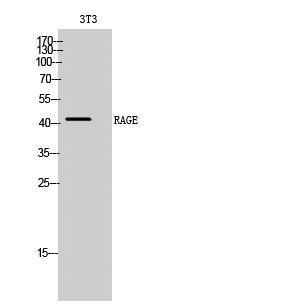产品名称
RAGE Rabbit Polyclonal Antibody
别名
AGER; RAGE; Advanced glycosylation end product-specific receptor; Receptor for advanced glycosylation end products
蛋白名称
Advanced glycosylation end product-specific receptor
存储缓冲液
Liquid in PBS containing 50% glycerol, 0.5% BSA and 0.02% New type preservative N.
Human Gene Link
http://www.ncbi.nlm.nih.gov/sites/entrez?db=gene&term=177
Human Swissprot No.
Q15109
Human Swissprot Link
http://www.uniprot.org/uniprotkb/Q15109/entry
Mouse Swissprot No.
Q62151
Mouse Swissprot Link
http://www.uniprot.org/uniprot/Q62151
免疫原
The antiserum was produced against synthesized peptide derived from human RAGE. AA range:133-182
特异性
RAGE Polyclonal Antibody detects endogenous levels of RAGE protein.
稀释度
WB 1:500 - 1:2000. IHC 1:100 - 1:300. ELISA: 1:20000.. IF 1:50-200
宿主
Polyclonal, Rabbit,IgG
背景介绍
The advanced glycosylation end product (AGE) receptor encoded by this gene is a member of the immunoglobulin superfamily of cell surface receptors. It is a multiligand receptor, and besides AGE, interacts with other molecules implicated in homeostasis, development, and inflammation, and certain diseases, such as diabetes and Alzheimer's disease. Many alternatively spliced transcript variants encoding different isoforms, as well as non-protein-coding variants, have been described for this gene (PMID:18089847). [provided by RefSeq, May 2011],
细胞定位
[Isoform 1]: Cell membrane; Single-pass type I membrane protein.; [Isoform 2]: Secreted.; [Isoform 10]: Cell membrane ; Single-pass type I membrane protein .
功能
function:Mediates interactions of advanced glycosylation end products (AGE). These are nonenzymatically glycosylated proteins which accumulate in vascular tissue in aging and at an accelerated rate in diabetes. Receptor for amyloid beta peptide.,similarity:Contains 1 Ig-like V-type (immunoglobulin-like) domain.,similarity:Contains 2 Ig-like C2-type (immunoglobulin-like) domains.,tissue specificity:Endothelial cells.,
纯化
The antibody was affinity-purified from rabbit antiserum by affinity-chromatography using epitope-specific immunogen.



